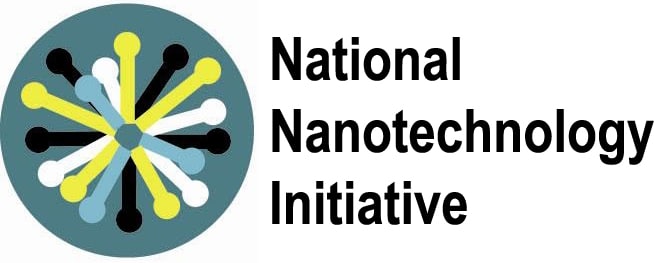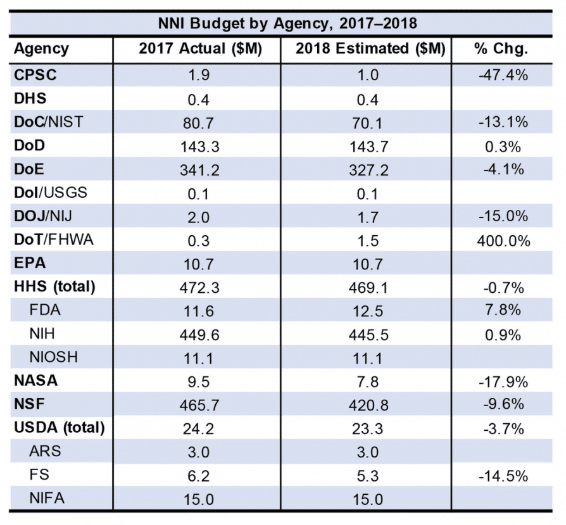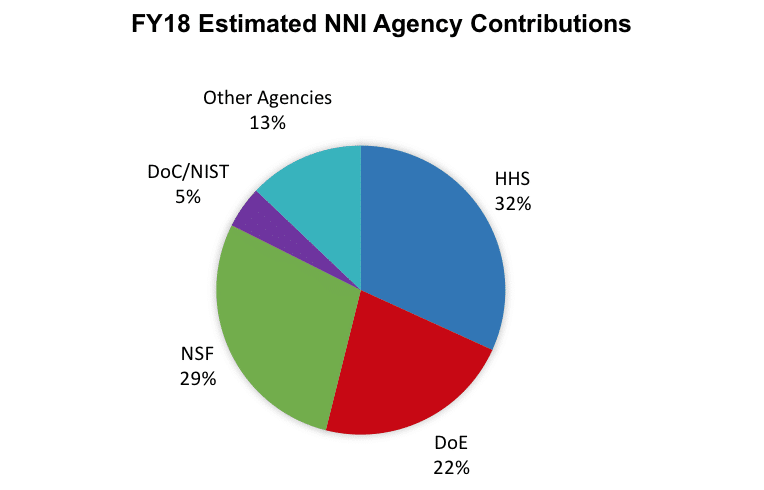National Initiative Continues to Focus on Fostering Nanotechnology R&D
Earlier this month, the National Science and Technology Council’s Subcommittee on Nanoscale Science, Engineering and Technology released the National Nanotechnology Initiative (NNI) supplement to the proposed fiscal 2019 US federal budget. The report identifies budget information and agency plans to accelerate the growth of nanotechnological R&D in the US.
Established in 2001 and formally authorized in 2003 under the 21st Century Nanotechnology Research and Development Act, the interagency Initiative is focused on fostering nanotechnology research to “understand and control matter at the nanoscale [which] leads to a revolution in technology and industry that benefits society.” The FY19 budget proposal requests approximately $1.4 billion, a 5.5% decrease, with the majority of agencies participating in the NNI either lowering their investments or keeping them flat (see table below).
However, it is important to note that this NNI budget proposal may change before finalization. The FY18 NNI budget estimate was $1.2 billion, but final figures place it closer to $1.5 billion. This is because, according to the report, a substantial amount of participating agencies’ investments into the NNI come from “core” R&D programs, in which the success rate of nanotechnology-related proposals, which is generally high, cannot be predicted in advance—this results in actual NNI investments being higher than the estimated requested levels.
In the table below, FY18 figures are based on annualized fiscal 2018 continuing resolution amounts and may change based on final appropriations and operating plans.
Since its establishment in 2001, the NNI has cumulated in almost $27 billion to advance nanotechnology in the US. The five federal organizations with the largest investments are the HHS/NIH, which focuses on nanotechnology-based biomedical research in life and physical sciences; the NSF, which concentrates on fundamental research and education within science and engineering fields; the Department of Energy (DoE), in which investments center around fundamental and applied research to develop new and improved energy technologies; the Department of Defense (DoD), which emphasizes science and engineering research to accelerate defense and dual-use abilities; and the Department of Commerce’s National Institute of Standards and Technology (NIST), which concentrates on fundamental R&D for nanotechnology fabrication tools, analytical methodologies, metrology and standards. Combined, these five federal organizations represent 95% of total investments in the NNI.
Foundational research remains the largest NNI Program Component Area (PCA), representing more than 39% of cumulative NNI investments in the FY19 budget proposal. Other PCAs include NNI signature initiatives; nanotechnology-enabled applications; devices and systems; and environment, health and safety.
Research infrastructure and instrumentation is another PCA. According to the report, the FY19 NSF request in the NNI budget includes continuing support for its nanotechnology infrastructure programs, namely the National Nanotechnology Coordinated Infrastructure program, but also for bolstering coordinated research for its Mid-scale Research Infrastructure priority area. The DoE will continue to work on operating the five Nanoscale Science Research Centers (NSRC), which are national user facilities for interdisciplinary nanotechnology R&D. RSCs contain cleanrooms, nanofabrication resources, novel signature instruments, electron microscopy and other nanotechnology-related instruments that are usually only available at major user facilities. These facilities not only provide training for graduate and postdoctoral researchers, but also enable access to academic, government and industry researchers.
The report indicates that other agencies, such as the NIST and DoD, will also continue user support and provide access to instruments at nanotechnology centers and labs. Many of these agencies support nanotechnology-specific resource centers. For example, the NIH funds cardiac, dental and other clinical research areas at resource centers; the National Cancer Institute provides support for the Centers of Cancer Nanotechnology Excellence and the Cancer Nanotechnology Training Centers. Certain NSF-related centers also focus on research areas that support the NNI, such as the Center for Cellular Construction, and two new nanotechnology Engineering Research Centers, one on nanobiotechnology and one on cell technology.
The report provides case studies and specific examples on progress made towards achieving each of the four goals in the NNI: advancing a world-class nanotechnology R&D program, including advancing sensing capabilities and metrology; providing the support of commercializing new technologies for commercial benefit, including advancing technologies within energy and infrastructure; creating and maintaining educational resources, a skilled workforce, and a solid infrastructure and toolset for accelerating the field of nanotechnology; and fostering responsible development of nanotechnology, such as developing the ability to understand the effects of nanomaterials in the environment and within the body.







